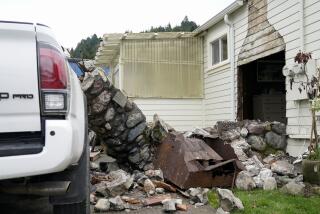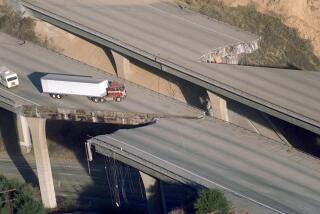Richter Scale: How Magnitude of Shocks Is Measured
- Share via
The Richter scale, the most common way of measuring earthquakes, is a system that tells earthquake scientists how much energy is released by a quake.
The scale was developed by U.S. seismologist Charles Richter in 1935, although past records make it possible to use the scale to figure out magnitudes of quakes that occurred as far back as 1906.
On the scale, small numerical differences--possibly only a few decimal points--can represent great differences in the severity of an earthquake. For example, the big quake that rocked Mexico City on Thursday, registering 7.8 on the Richter scale, was about four to four and a half times greater than the 7.3 aftershock, according to Steve Bryant, a geologist at the Caltech.
The scale works this way:
After an earthquake, the seismologist reads the needle markings on a seismograph, a device for measuring the movement of the earth. The largest sway of the needle across the seismograph paper gives the reader the amplitude, or maximum movement of the earth, during the quake.
The magnitude is recorded on a scale that starts at 0 and is open-ended. The largest quakes ever recorded were at 8.9 on the scale, in the Pacific Ocean near the Colombian-Ecuadorean border in 1906 and in Japan in 1933.
A quake at the magnitude of 8 is 10 times greater than one at the magnitude of 7 because it is figured on the logarithmic scale, in which increases are scaled to a power of 10.
That means, for example, that the San Francisco quake of 1906, which registered 8.3 on the Richter scale, was 10 times greater than Friday evening’s 7.3 aftershock in Mexico City.
But Richter scale numbers don’t tell everything about the extent of the damage a quake can cause. The same quake can create great devastation in one area and leave another area a few miles away virtually untouched. That occurs because of the makeup of the earth.
Damage last week was much more severe in Mexico City, built on a series of ancient lake beds that have filled up with unstable sediment, than it was in Acapulco, which stands on ground closer to bedrock.
More to Read
Sign up for Essential California
The most important California stories and recommendations in your inbox every morning.
You may occasionally receive promotional content from the Los Angeles Times.










